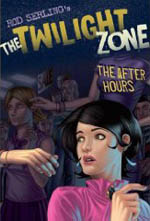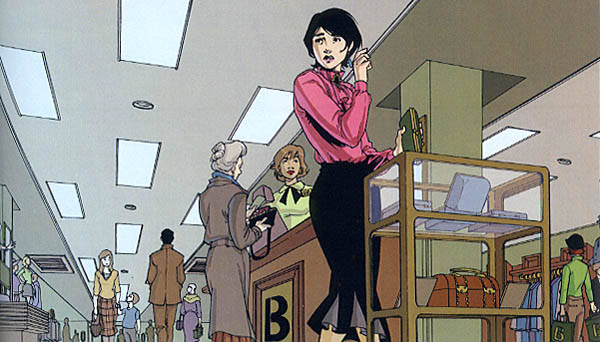 Original story by Rod Serling
Original story by Rod Serling
Adapted by Mark Kneece
Art by Rebekah Isaacs
72 pages, color
Published by Walker Books
I’ll admit that my initial reaction upon seeing upcoming adaptations of The Twilight Zone episodes into comics was, "Why?" Surely we had enough good comics out there that we didn’t need to jump back into the 1960s to find ideas? The more I thought about it, though, the more I realized it wasn’t such a bad idea after all. By aiming these books at younger readers, it’s an audience who has certainly never encountered the source material. And if they keep picking stories like The After Hours to turn into comics? Well, I hate to admit it, but it’s the kind of story that I think a lot of writers today wish they could write.
Marsha White is just another shopper, going to the department store to buy some much-needed things. Today it’s a golden thimble; she saw it in the advertisement and wants to buy one for her mother. But why did the saleswoman know Marsha’s name without being told? Why does everything seem eerily familiar? And what is really going on with the staff of the store?
Mark Kneece’s adaptation of The After Hours really uses the 72-page length of the book to its advantage; like Rod Serling’s original episode itself, it’s paced in just the right manner so that as events begin to unfold, the creepy sense of something going wrong continues to quietly ramp up. Even once the reveal begins, and you learn what’s really going on, it’s much to Serling and Kneece’s credit that there’s that uneasy atmosphere about the story—even the exposition feels creepy in places. It’s also nice to see that this is a story that almost 50 years later doesn’t feel terribly out of date; aside from perhaps the golden thimble itself, nothing feels particularly out of place or odd. It’s a good first choice in terms of what should be adapted, and hopefully all other stories will be chosen with equal care.

Rebekah Isaacs’s art is strong and solid; she’s very good at drawing normal looking people in every day situations. I appreciated her work here from the very first page, with an image of Marsha suddenly turning around in the department store. There’s a real look of worry and apprehension on her face, no captions or dialogue needed to bring that moment to life for the reader. What impressed me the most, though, is that when you go back through The After Hours it looks as if Isaacs kept the big reveal of the end of the story in mind when drawing her characters; with repeated poses and angles being utilized for the supporting cast, you can see her careful crafting of the page to sync up with what’s to come, here.
For a book aimed at younger readers, I don’t think The Twilight Zone: The After Hours will disappoint. It’s a nice updating of this classic television episode into the print medium, thanks in no small part to Serling’s strong script. Hopefully the rest of The Twilight Zone adaptations will be as good as this one.
Purchase Links: Amazon.com
